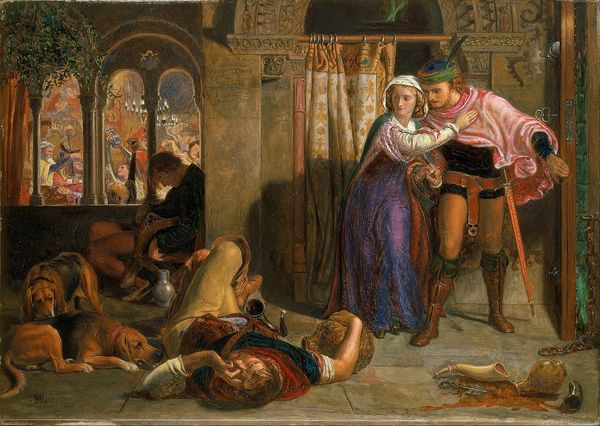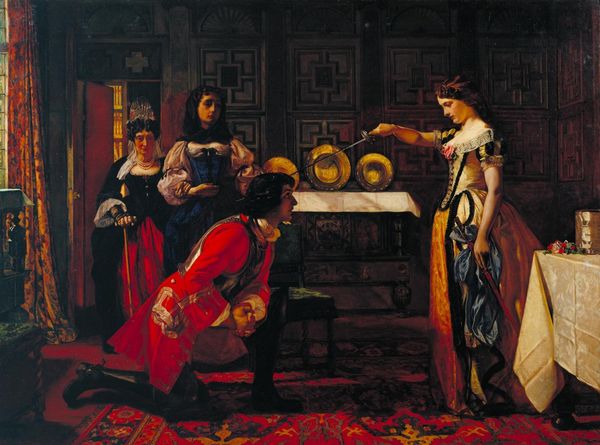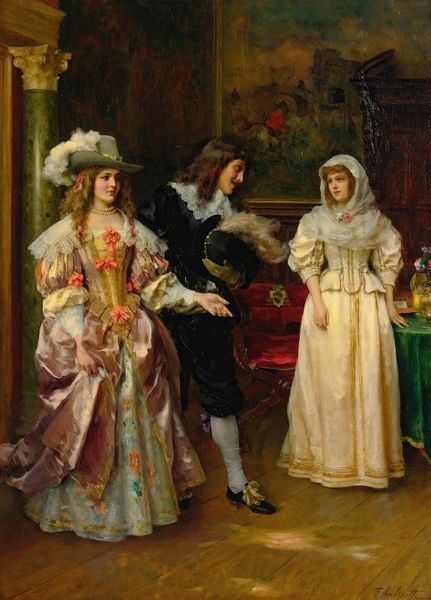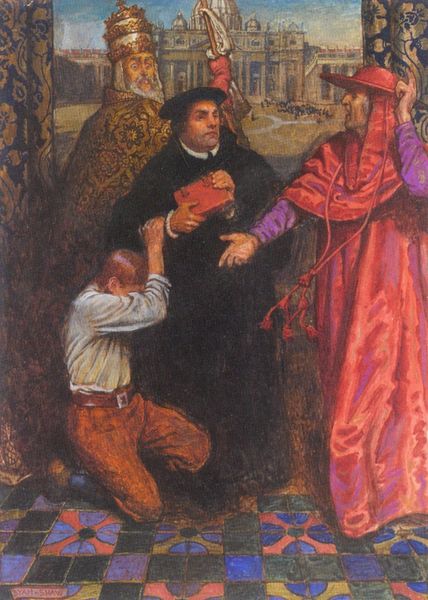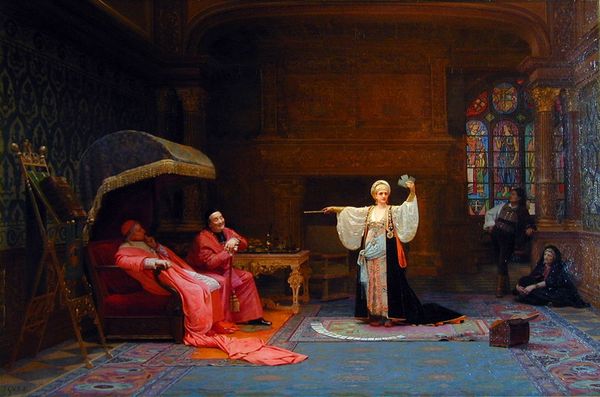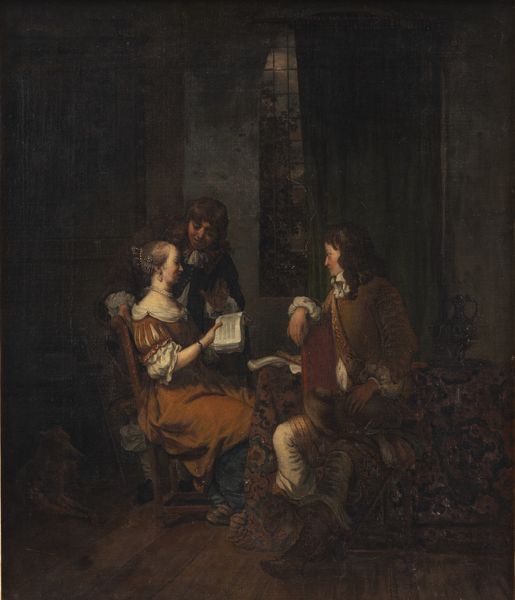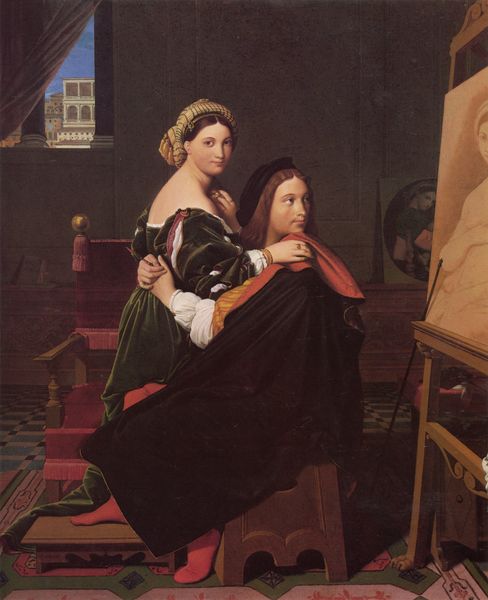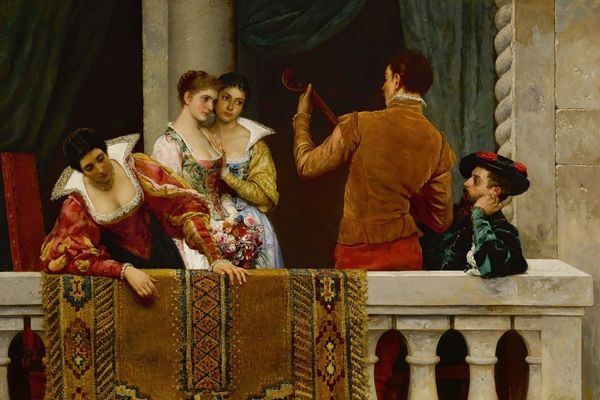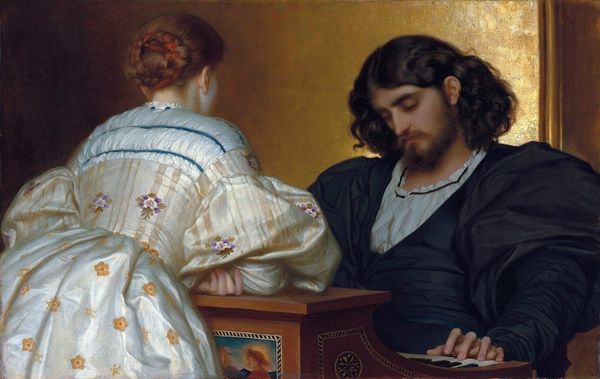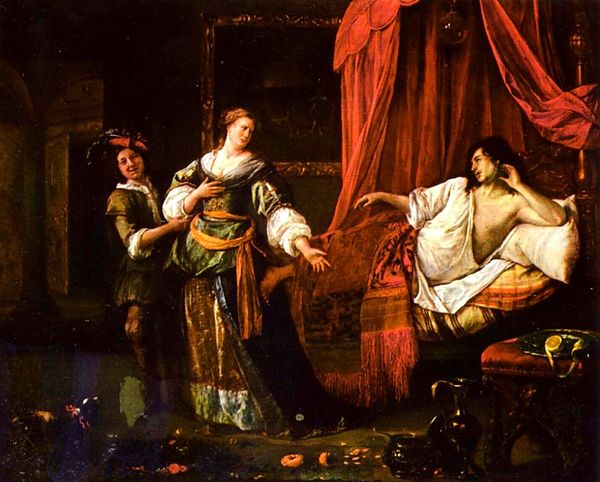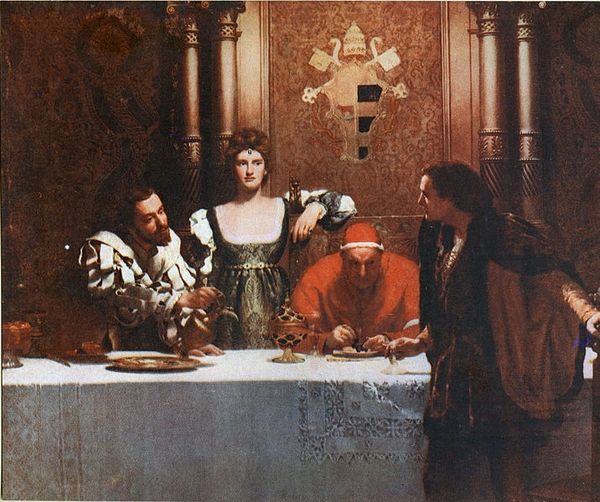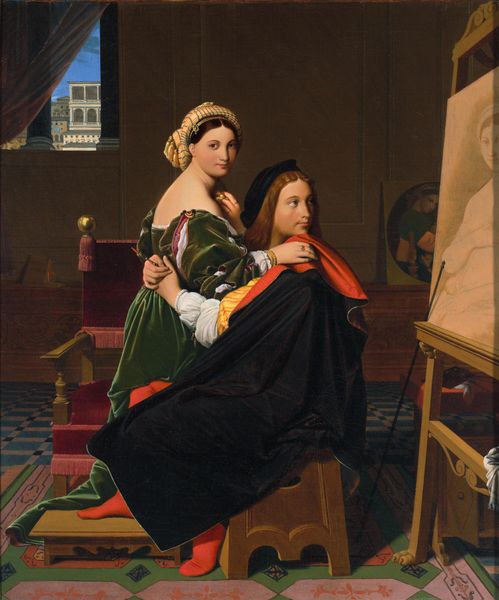
Dimensions: 105 cm (height) x 150 cm (width) x 4 cm (depth) (Netto), 141.6 cm (height) x 188.1 cm (width) x 7.6 cm (depth) (Brutto)
Kristian Zahrtmann made this painting of Queen Christina in Palazzo Corsini, but it's not dated. There's a lot of blue going on, kind of a melancholy vibe, like the queen's just hanging out, maybe bored. The brushstrokes are pretty tight, but the colors are layered in a way that gives it depth, like the artist was building up the image over time. Check out the texture on the queen's dress. Zahrtmann uses these tiny, careful strokes, but then he lets the blue bleed a little, so it feels both precise and a little wild. You can see the underpainting in places, like he wasn't afraid to leave the process visible, you know? It's almost like he's saying, "Here's how I made this, look closely!" It kinda reminds me of some of Manet's interiors, all those awkward angles and people just doing their thing. Art's always talking to other art, like a big conversation across time. I love how Zahrtmann embraces that ambiguity, leaving space for us to fill in the gaps and make our own connections.
Comments
statensmuseumforkunst over 1 year ago
⋮
This intimate historical painting shows the abdicated Swedish Queen Christina lifting up her dress to heat her behind by the fire. Zahrtmann may have become interested in Christina through his work on the Danish queen Leonora Christina, but he was also fascinated by the myth concerning her ambiguous gender identity. The ambiguity is accentuated here by the phallic pipe and by her inhabiting a traditionally masculine sphere: The spiritual, intellectual sphere, as symbolised by the book and statue. Zahrtmann was a controversial figure who taught many of the painters of the modern breakthrough. His radical choices of colour and motif stood out amongst the concepts of beauty prevalent in his time. Many figures in his work transcend the gender ideals of his time, but in real life he did not think women could be artists.
Join the conversation
Join millions of artists and users on Artera today and experience the ultimate creative platform.
